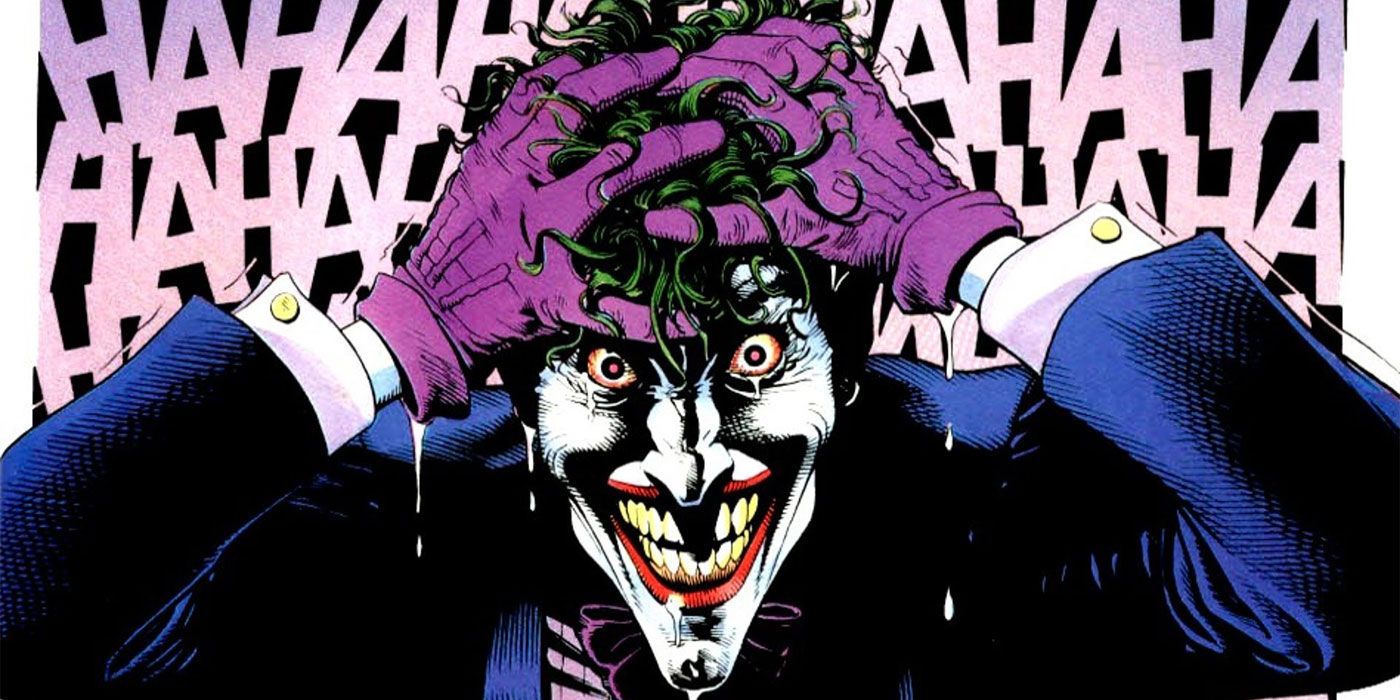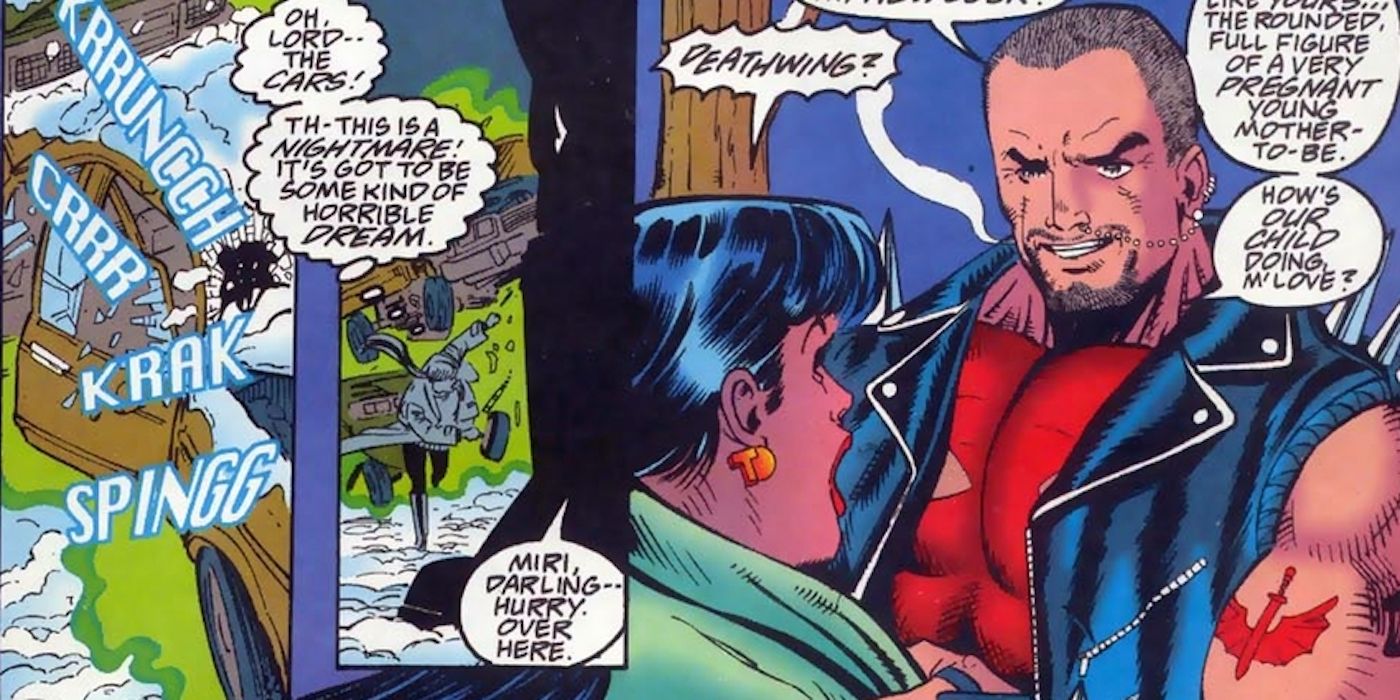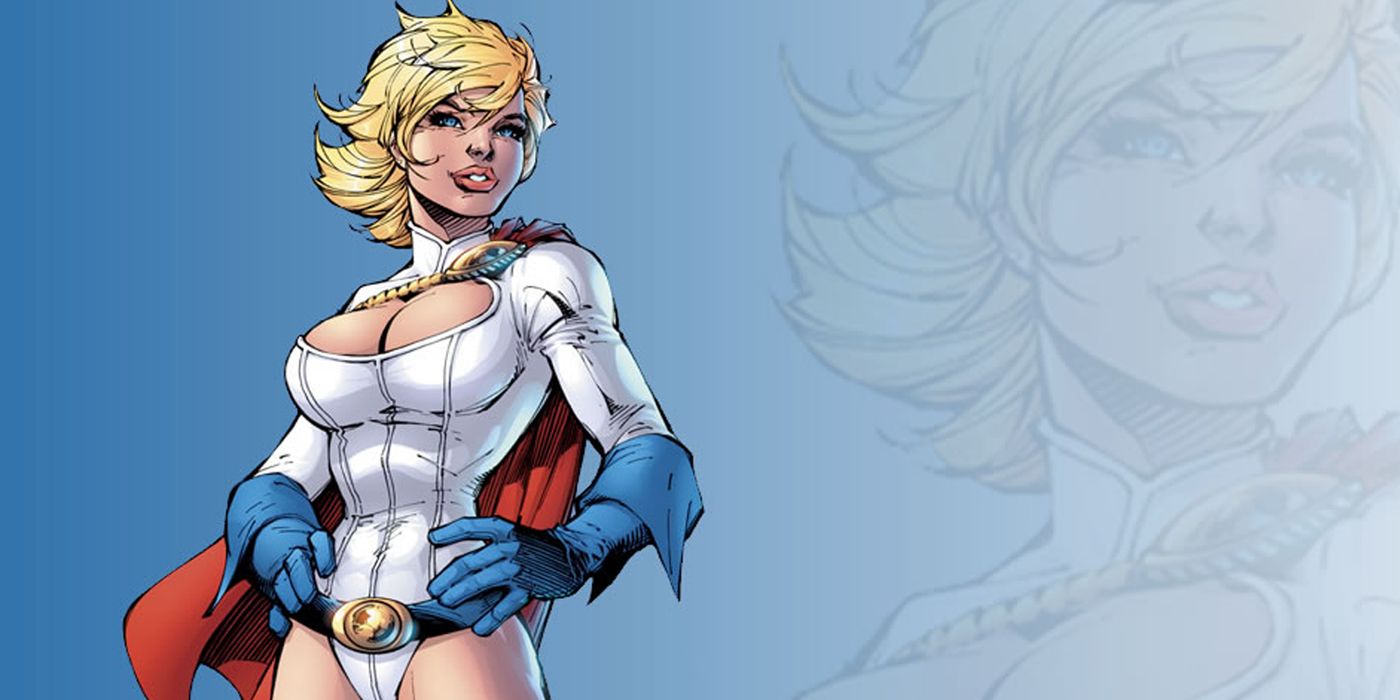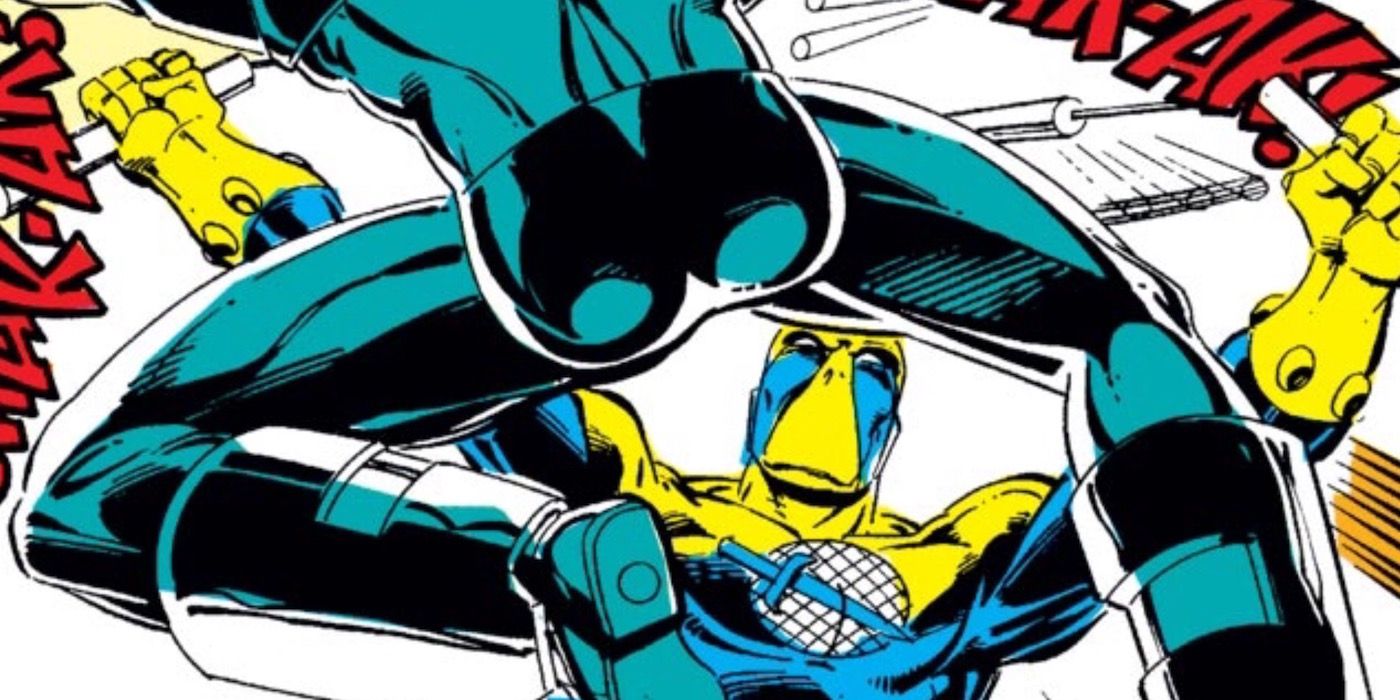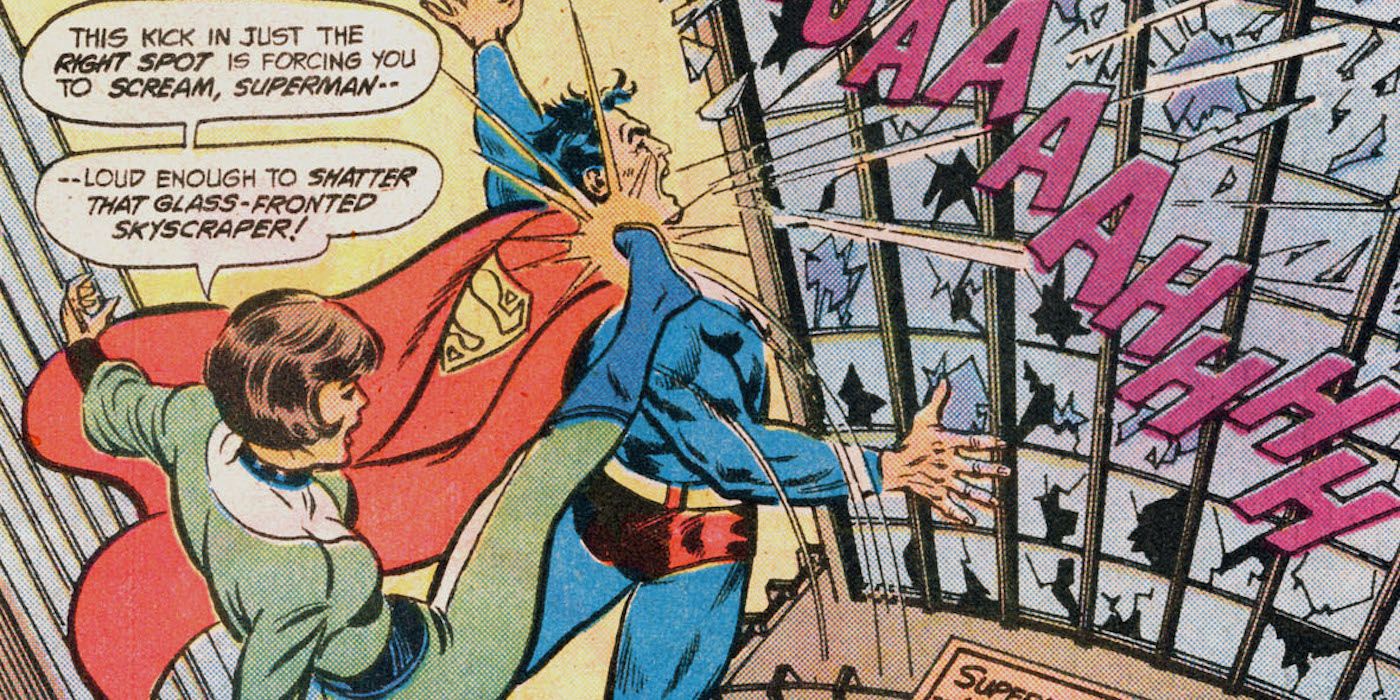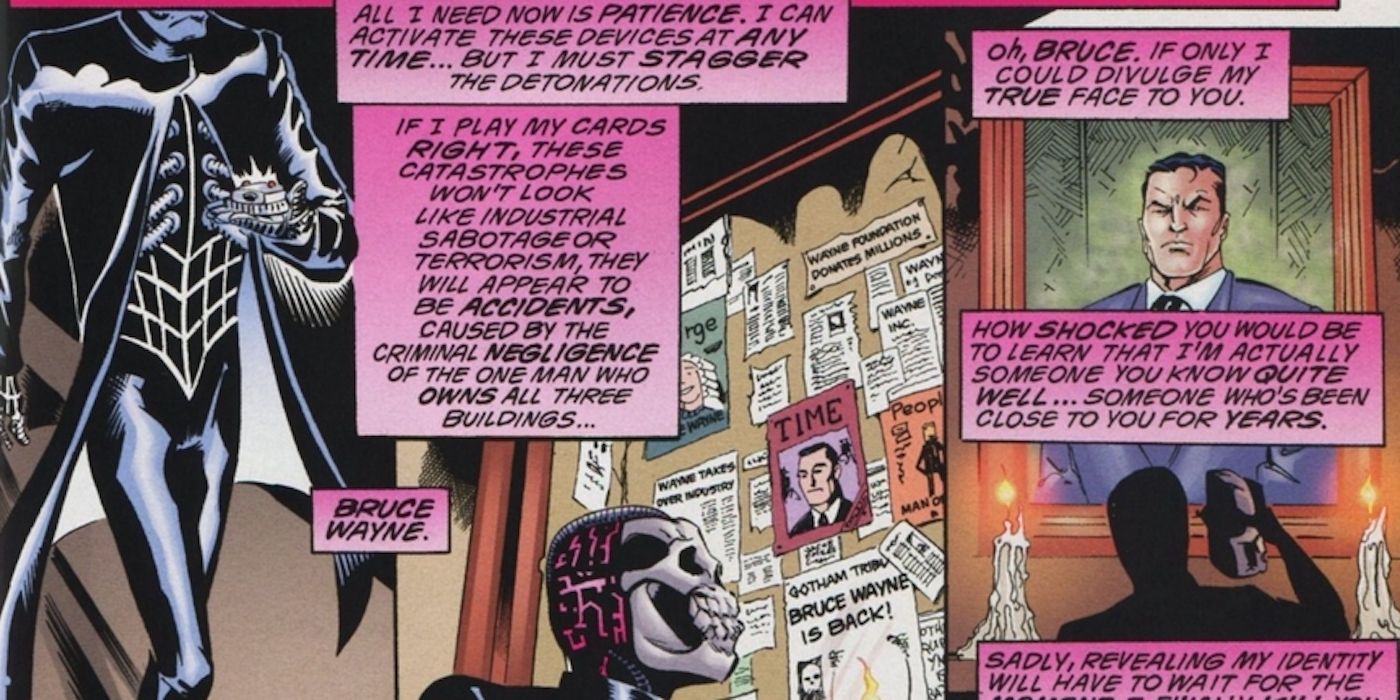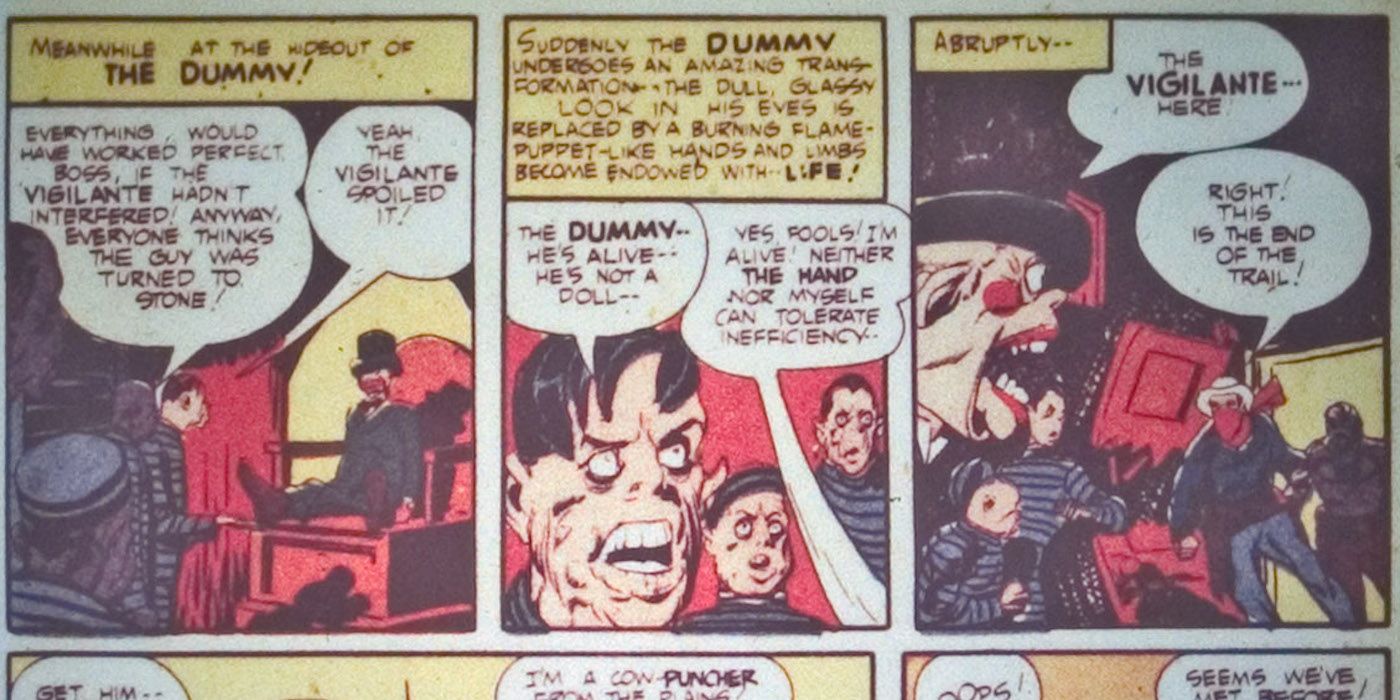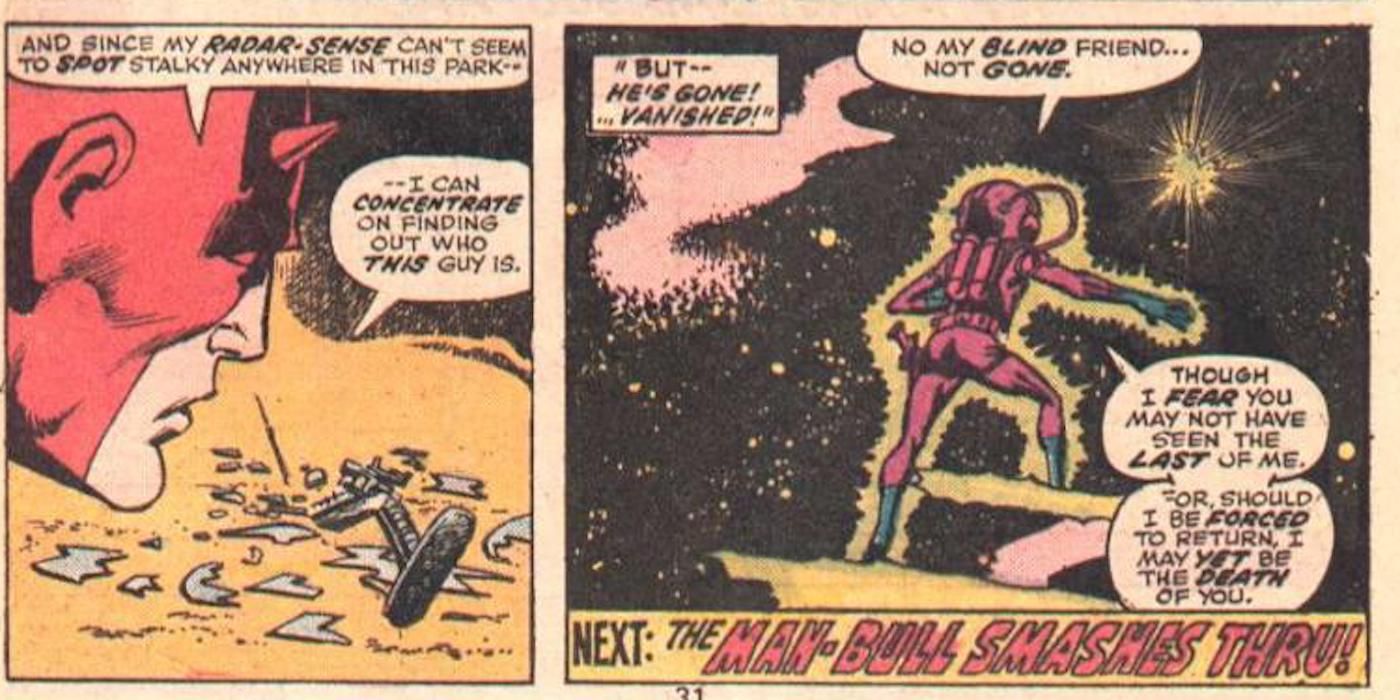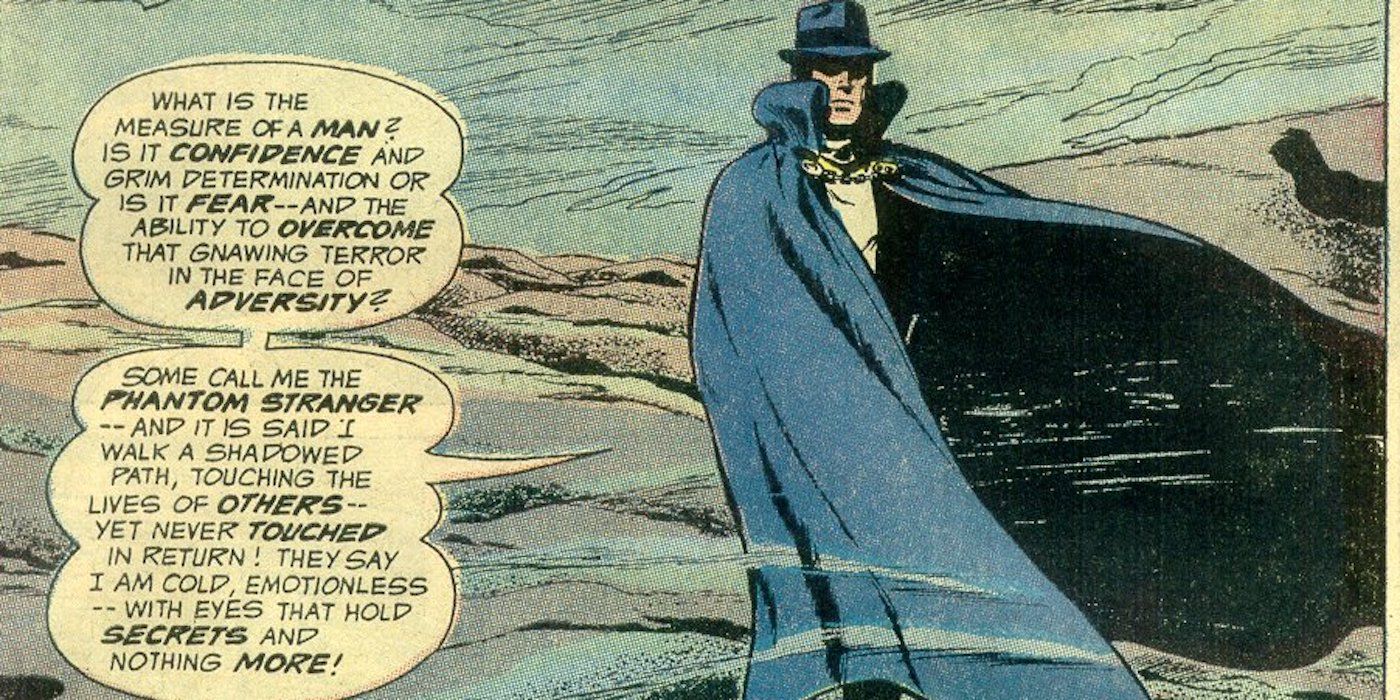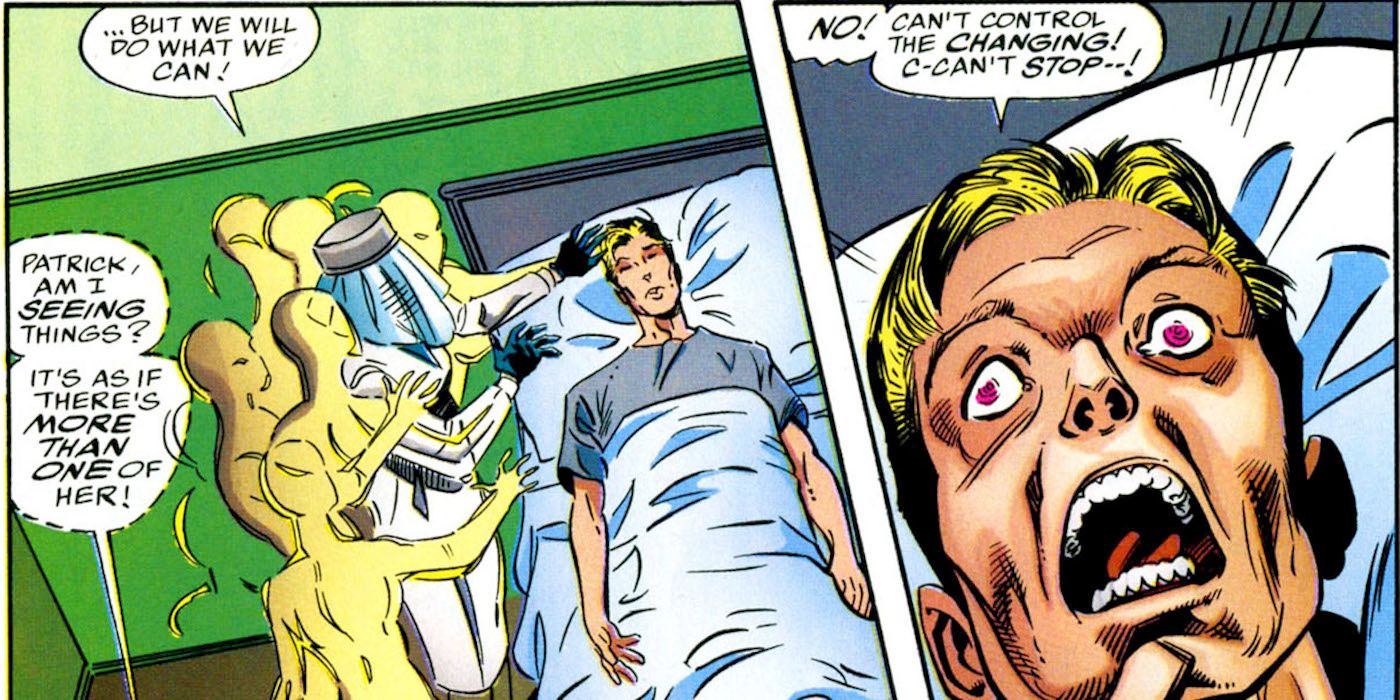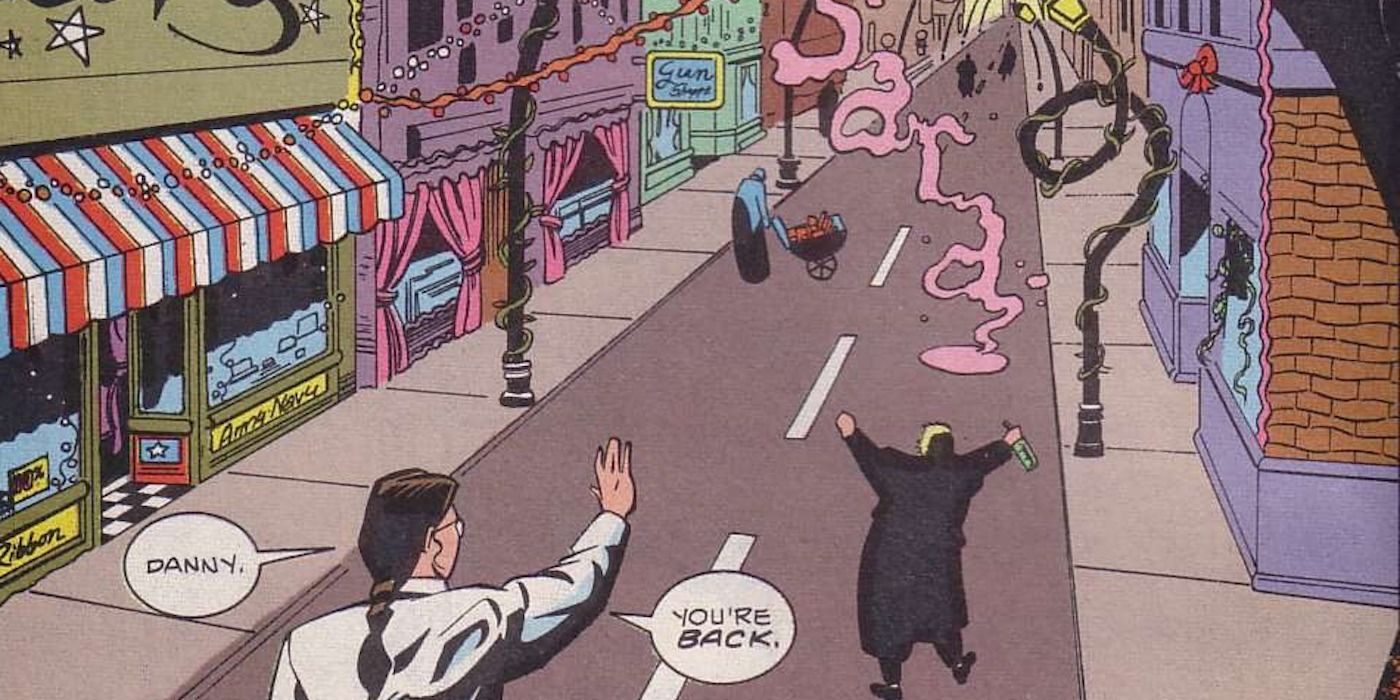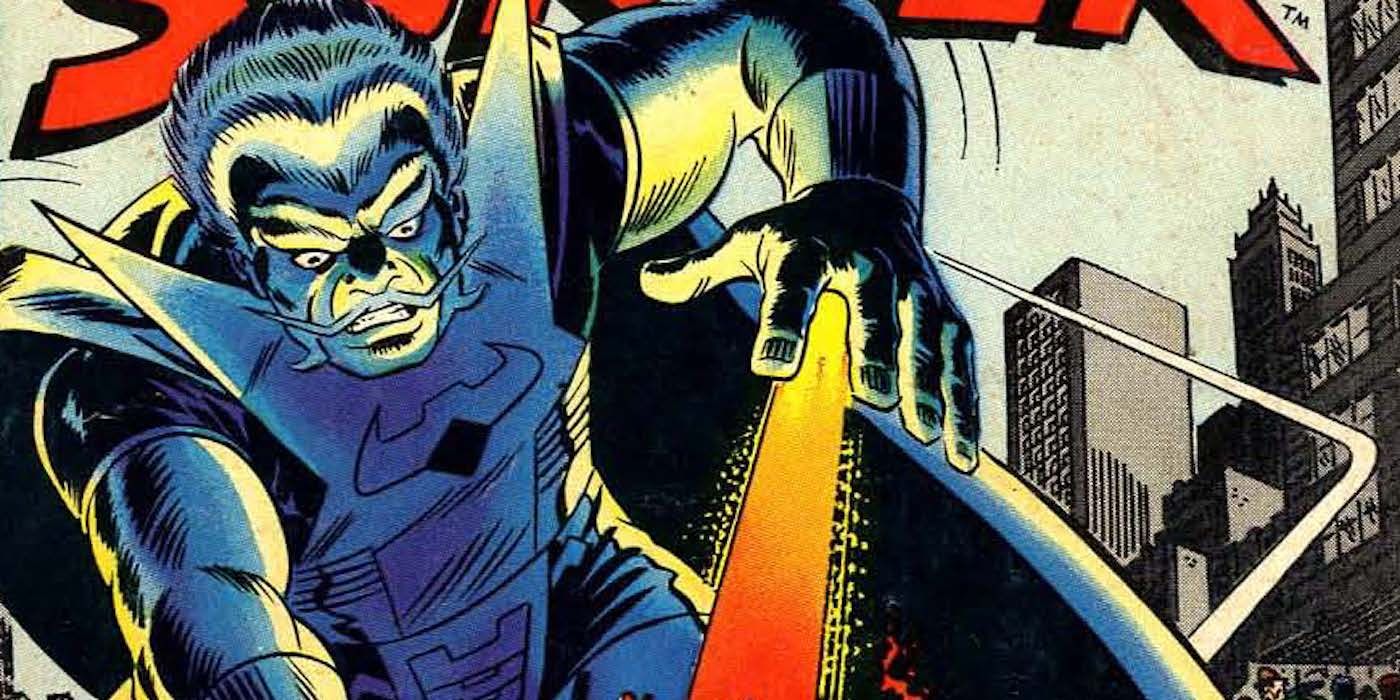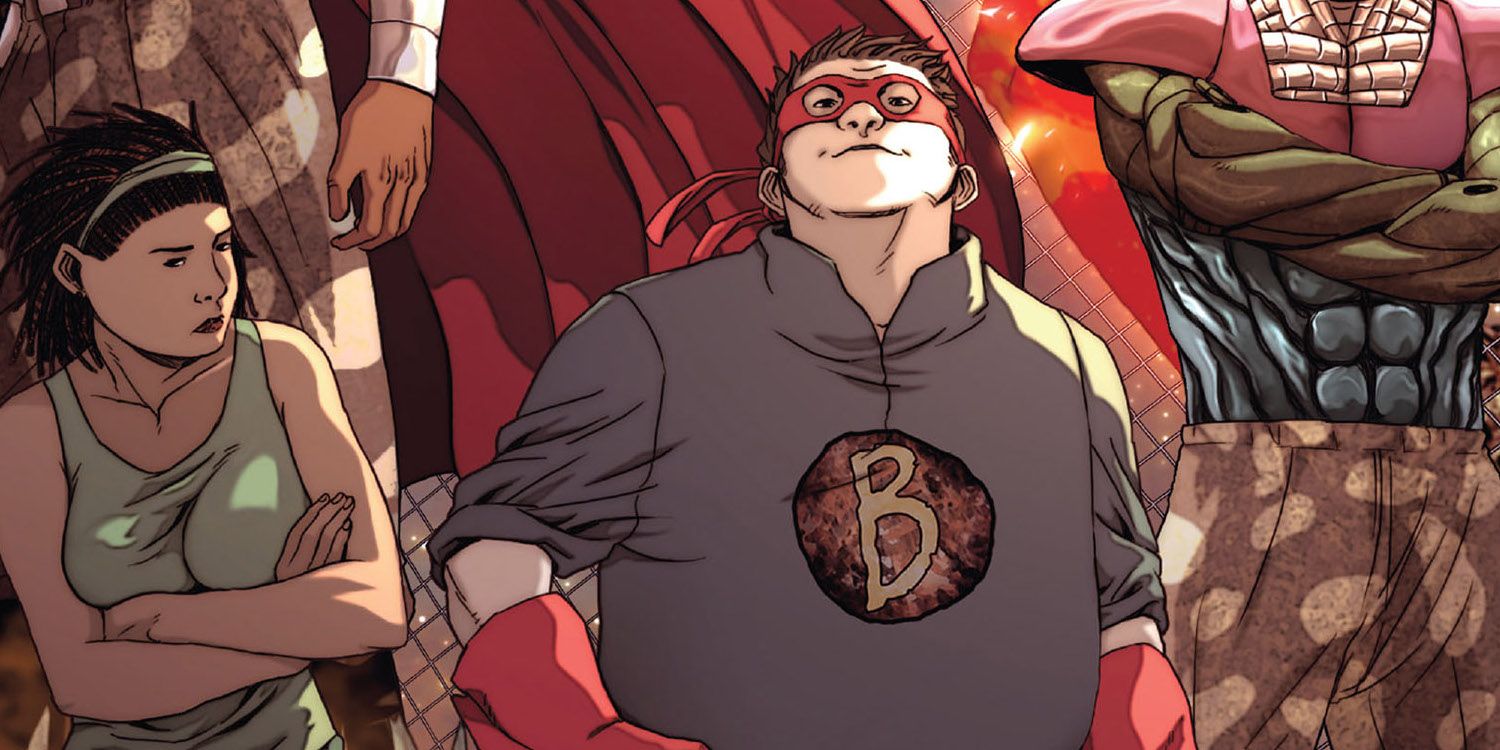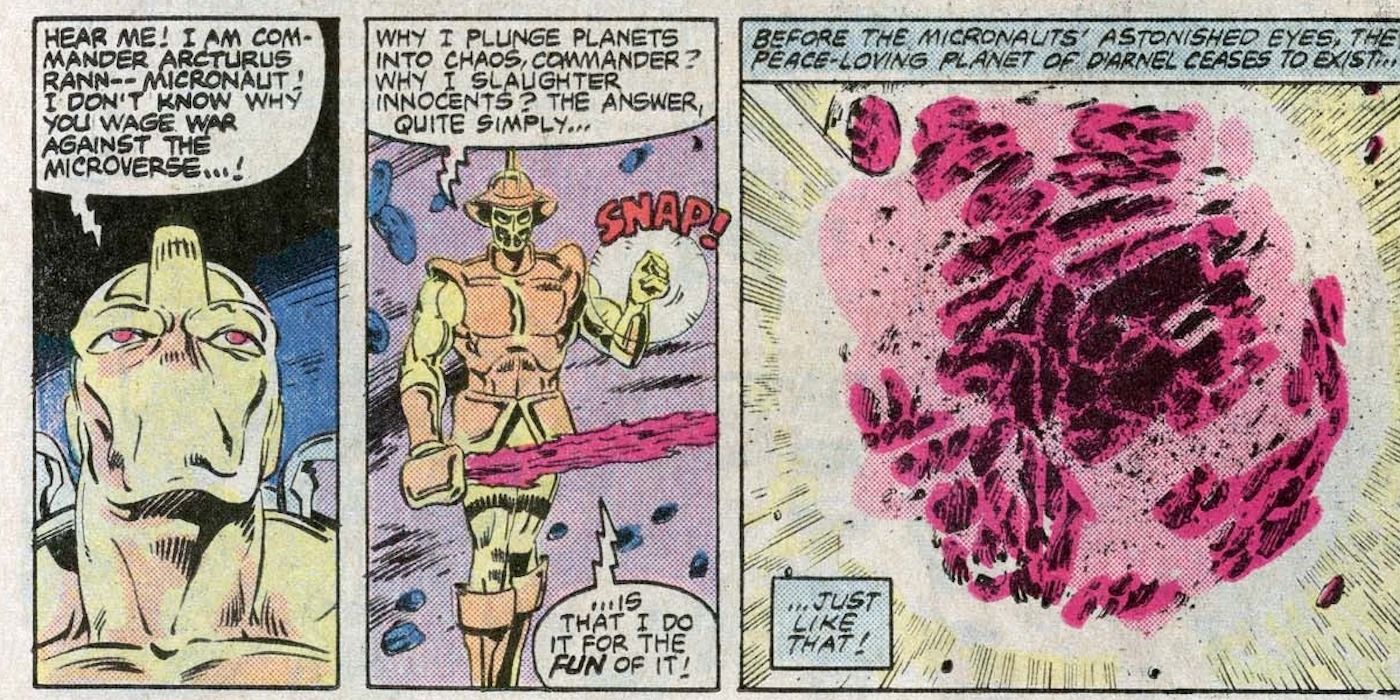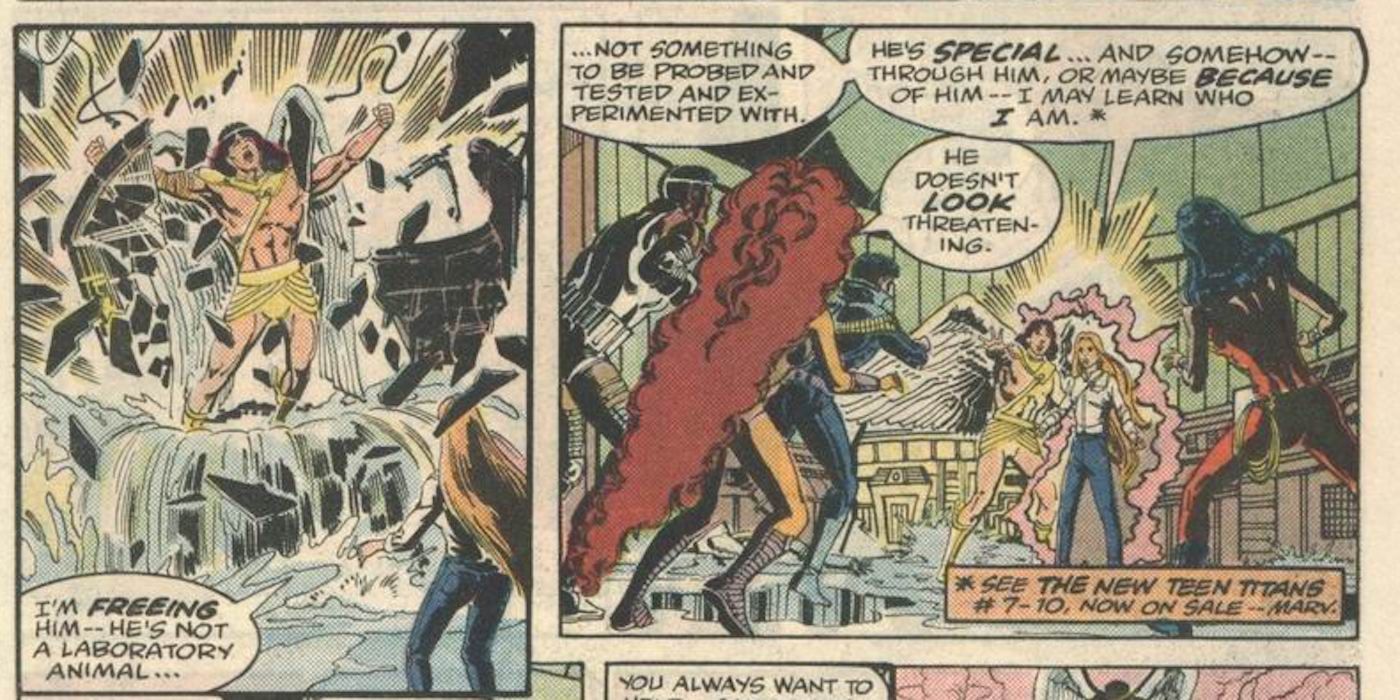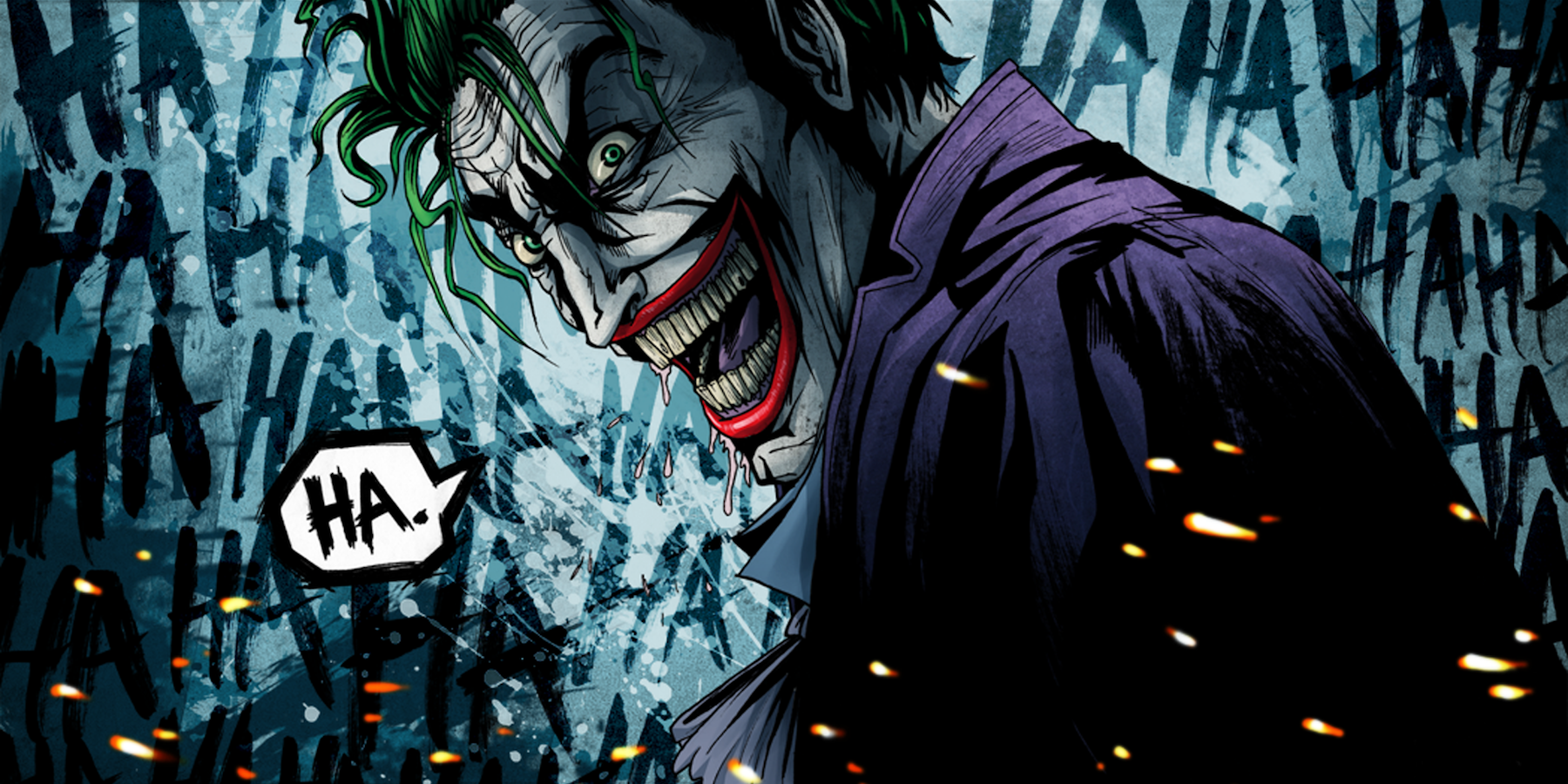Back in comics' Golden Age, origins weren’t a big deal. Batman went seven months before readers learned “who he is and how he came to be.” Green Arrow took a year and a half. Quality Comics’ the Spider and Quicksilver didn’t get origins until the 1990s. The same held for villains: the Joker went without any explanation of his past for 11 years, and the Penguin had to wait almost 40 for his.
Since the Silver Age, however, new characters usually come with origins attached. Even older origin-free characters have been saddled with explanations. However, there are still a few characters who wander through the Marvel or DC universes origin-free.
Some of these are genuinely mysterious characters. Others have no origin because comics are a group effort. One writer sets up a mystery, but leaves without resolving it. One writer provides an explanatory origin, someone else retcons it, someone else retcons the retcon, and the endless wheel just keeps on spinning.
The end result? Fifteen characters, stretching from the 1940s to the 21st century, whose secret origins remained secret.
15. Evil future Nightwing
No, evil future Nightwing’s origin is not the same as the altruistic present-day Nightwing’s. Because it turns out that future Nightwing isn’t Nightwing at all. And had we learned who he really was, we’d have probably all crapped our pants in fear, because he was that much of an evil badass.
Future Nightwing traveled back to the present with a future Teen Titans team to prevent their dystopian future from coming into existence. Instead, almost all of them were wiped out of existence in a complicated time-war story. Dick Grayson survived, but only so he could be turned evil, saddled with the name Deathwing, and given a new look to go with it. Because nothing says "Deathwing, evil badass" like nose piercings and tattoos, right?
In a confrontation with his girlfriend Mirage (seen in the panels above), Evil Future Dick revealed he wasn't Dick at all, but someone far more terrifying, as befitted a total evil badass. He wound up in suspended animation before he could name names, however, and never thawed out. His secret origin may remain secret forever, but somehow, it doesn't seem like that great a loss.
14. Power Girl
When DC wiped out its original continuity in the 1980s, that was a problem for Supergirl’s parallel world counterpart, Power Girl. In the new continuity, Superman was the only survivor of Krypton, so how did this alternate Kara fit in?
It turned out that she was the granddaughter of Arion, a wizard from pre-sunken Atlantis who’d had his own DC comic for a few years. Arion had battled a dark wizard for Kara’s soul, which wound up sending her into the future imbued with magic-based superpowers. Origin retcon achieved.
Sixteen years later, however, Geoff Johns retconned out that retcon. Arion meets Kara once again and reveals he’s a big fibber. He’s not her grandfather, that’s just a lie he told as a favor to her real parents. Who were — well, Johns never got around to telling us before the Flashpoint crossover event erased that Kara from continuity. The Power Girl of the New 52 is a parallel world Kryptonian again. Probably.
13. Spymaster
Let’s face it, some characters don’t need an origin. Spymaster, for instance, is just what he sounds like, an A-list industrial spy willing to take any dirty job if the price is right. But his first appearance established that he was more than an amoral crook with a great skill set.
In a multipart story beginning in Iron Man #33, Spymaster leads the Espionage Elite — a team based on TV’s Mission: Impossible — in an attack on Stark Industries. He assures the team the mission is going to make them rich, but it's not just about the Benjamins. In battle with Iron Man, Spymaster admits this attack is personal — he's been plotting to get revenge on Shellhead for months. Revenge for what? Spymaster didn't specify.
Perhaps if writer Alvin Brodsky had wrapped up the story, we’d have learned, but the rest of the arc was written by Gerry Conway. Neither he nor anyone else who’s written Spymaster since has explained what he was so angry at Iron Man about.
12. Faora
In the 21st century, Faora has been an accomplice of Zod, both in the comics and in Man of Steel. The Bronze Age original was more independent, scarier, and origin-free.
Phantom Zone prisoner Faora Hu-Ul debuted in a story arc running through Action Comics #471-473. Her 300 year sentence was the second highest of any Zoner, and for good reason: she was a serial killer who’d tortured 23 men to death in her males-only concentration camp. Reasons? Never given. Nor for how she became psionic (crippling pain blasts) or a master of horu-kanu, Krypton's deadliest martial art.
That's a lot of empty backstory, but Faora was impressive enough — outside the Zone, she could hold her own with Superman — that nobody fussed too much. She remained a recurring foe until the 1980s continuity reboot. The more recent versions may use her name, but they owe more to Ursa, Zod’s lover from Superman II.
11. Skeleton
Brian K. Vaughan created Skeleton long before he became a household name writing series such as Y the Last Man and Saga. In his one and only appearance, Skeleton pulls off crimes posing as Joker, Riddler, and Penguin. The crimes cover his real agenda, staging a series of accidents that will look like criminal negligence on the part of the industries’ owner, Bruce Wayne. Like Spymaster and Tony Stark, Skeleton has a personal vendetta against Bruce, a man he's apparently known for years — and the attacks are only step one.
Years later, Vaughan said he’d hoped the Skeleton story would land him a gig writing Batman. Had that happened, Skeleton’s big and evil plan would have played out over a year-long story arc. Even though Vaughan has no desire to revisit the story now, he also has no intention of revealing Skeleton’s secret origin. In his eyes, Skeleton’s more interesting as a mystery.
10. The Dummy
When the Dummy first appears in Leading Comics #1, he’s a “a baffling doll-like figure, in itself a puzzle long unsolved.” The crime boss looks so much like a ventriloquist’s dummy his henchmen assume that he really is, with one of them providing the voice — but which one?
None, it turns out. When they report back that the Vigilante (not the guy from Arrow, but a cowboy star turned Golden Age crimefighter) has ruined their crime scheme, it turns out the dummy is The Dummy. There is no man behind the curtain.
So was he a guy in makeup or some kind of living mannequin? Although he made a half-dozen further Golden Age appearances, they were all done by other writers who treated him simply as a cunning midget in a costume. It wasn’t until the 1980s that writer and Golden Age geek Roy Thomas tackled the question, revealing that the Dummy was indeed a real ventriloquist’s dummy, magically animated. But by whom? Why? How? We're still waiting for the answers.
9. The Sky-Walker
Marv Wolfman introduced the Sky-Walker in Daredevil #128 as the seed for a later story arc that would give Daredevil his first sci-fi adventure. When Wolfman left the book a year later, though, Sky-Walker had yet to return.
We learn from the character’s thought balloons that he was born on Earth and has been exiled here for 600 years. His true home is out among the stars, as is his true love. In defiance of whatever authority exiled him, he’s now creating a series of energy steps with which to cross the light years and return home.
Walking several light years seems an impractical solution to space travel, but if he had a way to speed things up, we never learned. Nor did we learn where he came from, why he was on Earth or even his name — Matt Murdock simply christened him Sky-Walker the following issue.
Quasar #16 briefly featured Sky-Walker as a prisoner of the Stranger (see #5), but didn’t reveal any more of his secrets.
8. Phantom Stranger
Look up man of mystery in the dictionary and you’ll see the Phantom Stranger’s face. He appears out of nowhere when people are in supernatural trouble, helps them out, then vanishes so suddenly that he makes Batman’s disappearances look clumsy. He knows things he can’t know, goes places he can’t be, and nobody knows why.
Of course, nothing sparks speculation like a good mystery. The stranger has been identified as an agent of Heaven, or of the cosmic Lords of Order. A fallen angel or the Wandering Jew. But they're all just guesses.
Which is just as well, because the Phantom Stranger works better as a mystery. As witness, the New 52 version did get an origin, and it’s a lot duller than anything fans imagined over the years.
7. Nightingale
Co-created by Roger Stern and John Byrne, Marvel: The Lost Generation told the story of the First Line, a superhero team operating from the mid-1950s until a few years before the Fantastic Four appeared. Part of what made it fun was that the creators frequently didn’t spell things out — they could give part of a character’s backstory and trust that readers familiar with comics tropes could map out the rest.
Nightingale was an exception. A psychic healer, she also exists in multiple selves across multiple times. Readers never learned how or why. Or how the team’s founder, the Yankee Clipper, ever ran into her. Of all the characters who didn’t get detailed origins — Reflex, Positron, Howler — only Nightingale feels like she might have benefited from one.
6. Danny the Street
Grant Morrison’s 1980s Doom Patrol remains one of the weirdest series in comics history. Danny the Street, who debuted in #335, never got an origin because in that series, weirdness doesn't need an explanation. Meeting a sentient teleporting street just means "It's Tuesday."
Danny must have been a cool place to hang out. He has a whimsical sense of humor that might, for instance, deck out the hardware or gun store with lacy pink curtains. He's open to everyone who wanders onto his sidewalk, regardless of gender, orientation, or eccentricities. Inevitably, such a nonconforming roadway drew the ire of the conformist Men from N.O.W.H.E.R.E. who tried to impose normalcy on him. Thanks to the Doom Patrol, they failed.
DC's New 52 introduced a second Danny, who did get an origin: he was a teenager who became a street after his powers were tortured and warped by the New 52's version of N.O.W.H.E.R.E.
5. The Stranger
The Stranger is of no relation to the Phantom Stranger. Or, as far as we know, to anyone in the universe.
He first showed up in X-Men #11 as an cosmically powerful alien who abducts Magneto for research into human mutations. In his next couple of appearances, he shows even more power and a very nasty disposition: he decides to annihilate the human race simply because he thinks we suck.
It wasn’t until Fantastic Four #116 that he got an origin. After a devastating interplanetary war, survivors on each side poured their consciousness into two cosmic composite beings, the Stranger and the Overmind. When the Overmind attacked the Earth, the Stranger took him down.
In the 1990s, that retcon was retconned away. In a rematch with Overmind, the Stranger revealed he had only pretended to be Overmind’s nemesis, a being who had died long ago. His real origin remained unknown, though he assured Quasar that he was unique in the universe. Of course, he lies a lot, so who knows if even that’s true?
4. Butterball
Marvel's original comic book Civil War crossover event ended with metahumans across the United States being recruited into the 50 State Initiative, a federal program to place a superhero team in every state of the Union. Along with established but obscure characters (Batwing, Razorback), the initiative also recruited many never-before-seen heroes. With so many new faces, it’s no surprise that the writers introduced many of them — Gorilla Girl, Sunstreak, Boulder — without working out their background info.
Boulder, AKA Emery Schaub, was a plump fry cook whose unexplained superpower was complete invulnerability. When he joined the initiative, his trainer labeled him “Butterball” and the name stuck. Although unkillable, Emery was a poor fighter and didn’t show much potential for improvement. The Initiative steered him towards fields where invulnerability might be more useful, such as firefighting. Instead, Butterball wound up getting dragged back into superheroic action as the world faced new crises in one big crossover or another.
3. The Entity
Everyone, so they say, has a dark side, and comic book characters frequently give in to theirs. All it takes is a blow on the head or demonic persuasion, and poof, you’re evil! But the Entity, Charles Xavier’s repressed evil impulses, didn’t even get that much of an explanation.
In the X-Men/Micronauts miniseries, the Entity begins attacking the subatomic Microverse, smashing entire planets with a thought. The Micronauts trace him to Xavier’s school where they join forces with the X-Men, unaware that their mentor is the monster. Eventually, with the two teams' help, Xavier shoves his evil impulses back inside his head.
Thing is, we never learn how they got loose. No head injury, no psionic attack, it just happened. Nor do we learn how Xavier, a telepath, can suddenly blow up planets by thinking hard.
Equally weird, nobody in the X-Men seems the least bothered by the fact Xavier can turn evil so easily or that it might happen again.
2. Azrael
Like Sky-Walker, we know Azrael (not the same-name guy who replaced Bruce Wayne as Batman in the 1990s) was an ET. But the reasons he came to Earth? The planet he’s originally from? His real name? Crickets.
After archeologists uncovered Azrael’s ship buried in ice, STAR labs thawed him out in Teen Titans #53. He immediately developed a psychic link with the ex-Titan Lilith and carried her off. Assuming he was kidnapping her, the Titans attacked him, which led Lilith to rip them a new one.
Eventually, Azrael and Lilith split up and the ET fell under the thrall of cult leader Brother Blood. It was the cult who named the alien Azrael, claiming he was an angel. Eventually, Azrael broke from the Church of Blood and vanished into comics oblivion.
When interviewed about the character years later, even creator Marv Wolfman (who's now struck twice on our list) couldn’t remember anything about Azrael’s origins.
1. Joker
The thing about the Joker is, he’s crazy. Maybe too crazy to remember his own past consistently (“I prefer it to be multiple choice!”). He’s also a hammy performer, quite capable of making up whatever backstory suits his audience at any given moment.
So maybe, as in the 1951 origin, he was once the cunning master criminal, the Red Hood. Or maybe, as in The Killing Joke, the Red Hood was a desperate loser who only turned to crime to support his pregnant wife, then wound up going crazy.
Or maybe the insanity is the lie. A 1992 story suggested that the Joker might be perfectly sane, but playing crazy lets him torment Batman by continuing to kill. Or he might have made up the story about sanity to torment Batman some more.
The New 52 Joker claimed in Endgame to be a mysterious immortal called the Pale Man. True or false? And what about Batman's recent discovery that there might be three different Jokers?
With the Clown Prince of Crime, it’s not that we don't have an explanation for his origins. It’s that he has too many.
--
If you know any unexplained characters we missed, let us know in comments.

